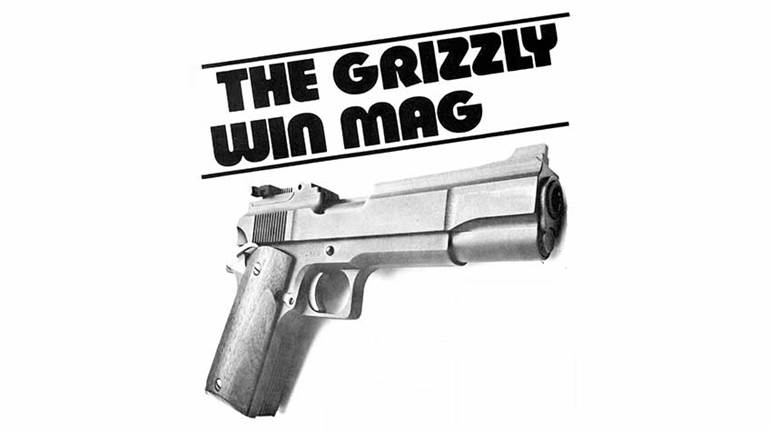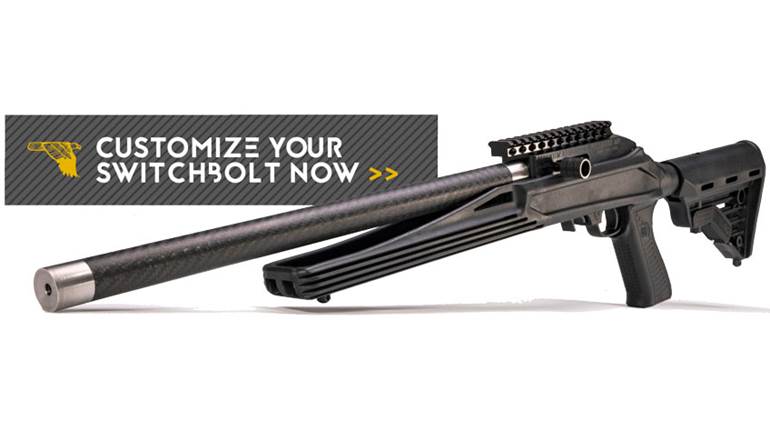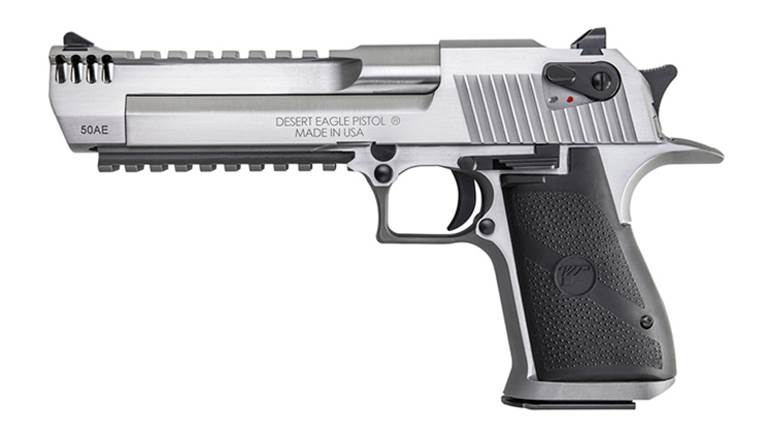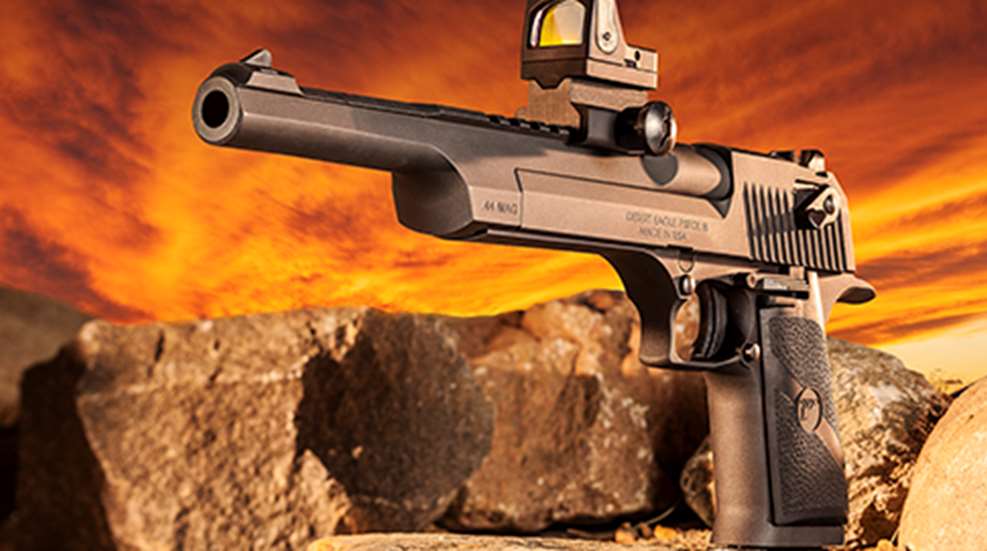
Few firearms enjoy the level of instant recognition accorded the Magnum Research Desert Eagle semi-automatic pistol. It has been a mainstay of action movies since its first appearance in the 1985 film “Year of the Dragon,” starring Mickey Rourke. Originally conceived in 1979 as the keystone product of Magnum Research, Inc., of St. Paul, Minn., the pistol borrows from time-tested semi-automatic rifle designs, throwing in some unique solutions of its own. Its design allowed Magnum Research to successfully launch a semi-automatic pistol capable of firing magnum-caliber ammunition.
The earliest variant of the Desert Eagle, the Mark I chambered in .357 Mag., was first available late in 1983 and produced under contract by Israel Military Industries (IMI). During the three decades since its launch, the pistol has progressed to the Mark XIX iteration, which has modular components allowing conversion to .357 Mag., .44 Mag., and .50 Action Express (AE). The Desert Eagle is now wholly produced in the United States under the auspices of Kahr Arms. However, since production moved stateside in 2009 some of the previous barrel options have not been available from the factory. To help rectify that problem, Magnum Research announced that this year it would release the first American-made, matte-black oxide-finished .44 Mag. Desert Eagle with a 10-inch barrel.
Consisting of 92 parts, the Desert Eagle employs a multi-lug rotary bolt similar to that found in an AR-15 rifle. The design requires minimal rotation and ensures even engagment, aiding accuracy. While many semi-automatics are recoil-operated, the single-action Desert Eagle is gas-operated, much like the AK-47 rifle. After firing, a small gas valve located under the barrel channels propellant gases into a piston to drive the slide back. With the slide moving back, the rotating bolt unlocks from the chamber to eject the spent cartridge case, cock the hammer and strip a fresh round from the magazine during its travel forward.
The pistol’s recoil is managed by dual guide rods fitted with three-wire braided recoil springs, which are some of the most durable springs on the market. The pistol’s external controls are located on the left side for right-handed operation. The ambidextrous, side-mounted external thumb safety swings up into the firing position and back down into the safe position. Its detachable, eight-round steel magazine is released from the grip frame by pressing the magazine release located behind the trigger guard.
The all-American .44 Mag. extended-barrel version of the Desert Eagle, just like the other models in the series, is constructed of 4140 chrome-moly steel. It arrives from the factory with fixed combat-type sights, rubber stocks, and a matte-black, oxide finish. The hammer-forged 10-inch barrel has polygonal rifling and a hard-chromed chamber. The barrel is fixed to the frame, and the full-length Picatinny rail atop the barrel for mounting optics is milled-in rather than being a separate piece attached with screws.
The overall fit and finish of the pistol tested was excellent, demonstrating the attention to important details that Magnum Research is known for. On the range, the 10-inch barreled .44 Mag. version provided quite a different shooting experience from the 6-inch barreled .50 AE version. Magnum Research recommends firing the .50 AE variant with a two-handed grip, since with or without a muzzle brake attached to the barrel, the felt recoil it produces is stout. One would expect the potent .44 Mag. would produce a reduced, but still memorable, level of felt recoil as well; however, the weight of the 10-inch barrel and lower pressure of the .44 Mag. cartridge bring the recoil down to a moderate level, not unlike that of a full-size steel-frame M1911.
Another advantage of choosing the .44 instead of the .50 is ammunition availability. The number of available factory-loaded .50 AE cartridges is quite limited, and they tend to be expensive. The .44 Mag. is a more plentiful, affordable, load. However, not all factory .44 Mag. rounds will function reliably in the pistol. Variations in overall cartridge length and bullet shape in .44 Mag. cartridges, which a revolver forgives, prevent some loads from fitting into the Desert Eagle’s magazine. Others will fit in the magazine, but may preclude proper feeding. It’s simply an ammunition fact that needs to be considered.
Of the test cartridges found to have a bullet profile compatible with the magazine, all functioned reliably. Three of the magazine-friendly loads were used for accuracy testing. This version of the Desert Eagle is well suited to bench shooting. The smooth, crisp two-stage trigger broke at 3 pounds, 12 ounces, contributing to down-range accuracy. With a Trijicon RM05 dual-illuminated amber-dot optic attached to the integral Picatinny rail, five-shot groups were fired into targets posted at 50 yards. No single group exceeded 2.26 inches, with the best single group at 1.51 inches. Five group averages were around 2 inches.
Along with accurate shot placement, the closed breach and 10-inch barrel of the Desert 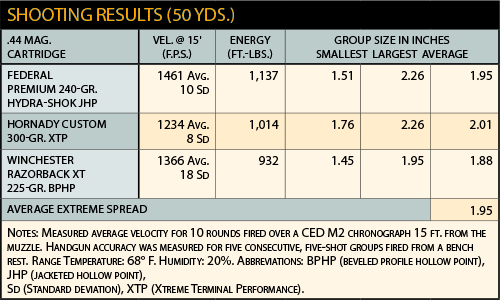 Eagle generated an increased level of performance from the .44 Mag. cartridges. Bullet velocity was an average of 80- to 250-f.p.s. faster than those published on the ammunition boxes, depending on the cartridge fired. The additional velocity increased the muzzle energy by an average of 100 to 350 foot-pounds. This added performance certainly won’t hurt when using the Desert Eagle to hunt medium-size game. Off the bench, held in a two-handed standing grip, the Desert Eagle continued to produce the accuracy needed for vital hunting shots.
Eagle generated an increased level of performance from the .44 Mag. cartridges. Bullet velocity was an average of 80- to 250-f.p.s. faster than those published on the ammunition boxes, depending on the cartridge fired. The additional velocity increased the muzzle energy by an average of 100 to 350 foot-pounds. This added performance certainly won’t hurt when using the Desert Eagle to hunt medium-size game. Off the bench, held in a two-handed standing grip, the Desert Eagle continued to produce the accuracy needed for vital hunting shots.
A question that arises with the revival of the 10-inch Desert Eagle .44 Mag. pistol is whether or not it’s practical to make what is already a large handgun even larger. The answer is yes, if the Desert Eagle already meets your shooting requirements. The longer barrel improves performance and accuracy potential. When loaded with compatible .44 Mag. cartridges, the reliability needed for handgun hunting and target shooting is there. Even though the pistol will not feed every .44 Mag. load, what it will feed offers a much greater factory cartridge variety and cost savings over the .50 AE. In some ways, it’s even more enjoyable to shoot than its .50-cal. compatriots. You get all of the Desert Eagles capabilities without the pain in your wallet and wrists.
Manufacturer: Magnum Research, Inc., 12602 33rd Ave. S.W., Pillager, MN 56473; (508) 635-4273
Caliber: .44 Mag.
Action Type: gas-operated, semi-automatic center-fire pistol
Construction: 4140 chromoly steel
Finish: matte-black oxide
Barrel: 10" with integrated Picatinny rail
Rifling: polygonal, 1:18" RH twist
Sights: fixed
Trigger: serrated steel bow; 3-lb., 12-oz. pull
Magazine: eight-round detachable steel box
Stocks: black rubber
Length: 143⁄4"
Height: 61⁄4"
Width: 11⁄4"
Weight: 4 lbs., 12.8 ozs. (with empty magazine inserted)
Accessories: hard case, one magazine, lock, owner’s manual, instructional DVD
Suggested Retail Price: $1,650













